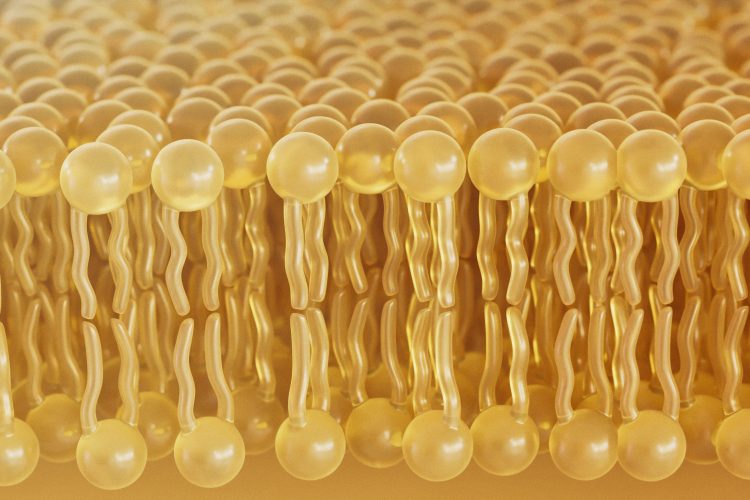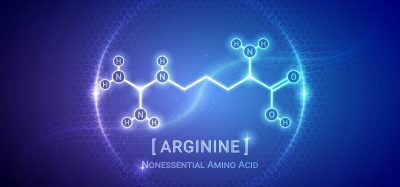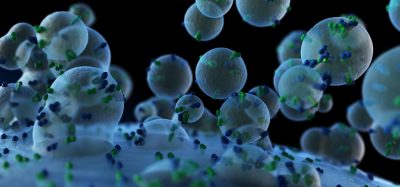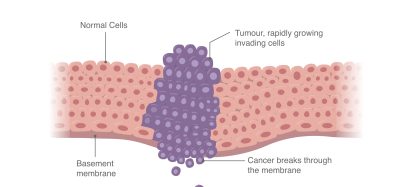Mapping lipid pockets to drug the undruggable proteome
Posted: 24 November 2025 | Drug Target Review | No comments yet
Tasca Therapeutics is using chemical proteomics to map lipid-binding pockets on proteins. By targeting auto-palmitoylation, the company aims to turn previously undruggable cancer drivers into viable therapeutic targets.


Drug discovery has long centred on enzymes and receptors with clear active sites, leaving many membrane-associated proteins beyond reach. Lipid modifications such as palmitoylation control how these proteins anchor to membranes and relay growth signals yet their dynamic, hydrophobic pockets have resisted conventional screening. Advances in proteomics and chemical biology are now revealing these hidden regions as viable drug targets.
Tasca Therapeutics is applying this knowledge through a platform that maps and modulates auto-palmitoylation – a self-driven lipid modification that shapes protein localisation and activity. By designing small molecules that influence this process, Tasca aims to convert previously undruggable cancer drivers into tractable targets.
Understanding the biology: what is auto-palmitoylation?
Proteins are not static entities. After translation, they often undergo chemical modifications that alter how they behave in cells. One such process is palmitoylation, the reversible attachment of a 16-carbon fatty acid (palmitate) to cysteine residues. This lipid anchor determines how a protein associates with cell membranes, how long it remains stable and how it interacts with other signalling components. In simple terms, palmitoylation acts like adding a small sticky chemical tag that helps a protein attach to the cell’s outer layer and communicate with other molecules.
Many cancer-causing proteins undergo a specific post-translational modification called auto-palmitoylation, a process which, at its most basic level, determines where a protein goes and how it functions.
In auto-palmitoylation, the protein modifies itself rather than relying on an enzyme. This self-modification can control where the protein resides and how it transmits signals. Disrupting this process has the potential to destabilise disease-driving proteins without affecting normal cellular machinery.
“Many cancer-causing proteins undergo a specific post-translational modification called auto-palmitoylation, a process which, at its most basic level, determines where a protein goes and how it functions,” explains Dr Milenko Cicmil, co-founder and CEO of Tasca Therapeutics.
For decades, these lipid modifications were largely invisible to drug discovery. The binding pockets involved are hydrophobic and flexible, often shifting in shape or buried within membranes. As a result, they escaped the notice of standard screening methods.
The challenge of targeting lipid pockets
Traditional structure-based drug design depends on clear, rigid protein structures. Auto-palmitoylation sites, by contrast, exist within dynamic lipid pockets that move as proteins fold and interact with membranes. These transient regions made it almost impossible to model or target accurately.
While rich in promise, this has traditionally been a challenging area of drug discovery because these pockets were invisible to conventional screening and are often shallow or dynamic, making them difficult to drug.
“While rich in promise, this has traditionally been a challenging area of drug discovery because these pockets were invisible to conventional screening and are often shallow or dynamic, making them difficult to drug,” says Cicmil.
Despite these difficulties, palmitoylation affects a vast portion of the proteome – perhaps more than five percent. Many of those proteins are implicated in signal transduction, cell growth and oncogenesis, suggesting a large untapped target class.
By uncovering and characterising these sites, researchers could intervene in key regulatory points rather than downstream effects, offering the precision that modern oncology seeks.
Mapping the invisible
Tasca Therapeutics is tackling this challenge through mass-spectrometry-based proteomics. The company’s platform detects and quantifies auto-palmitoylation across the proteome, pinpointing the exact cysteine residues involved and the shape of their lipid-binding pockets.
Using mass-spectrometry-based proteomics, Tasca can now precisely map these lipid-binding pockets and the exact auto-palmitoylation sites.
“Using mass-spectrometry-based proteomics, Tasca can now precisely map these lipid-binding pockets and the exact auto-palmitoylation sites,” says Cicmil. “Leveraging these previously unknown binding pockets, we are developing small-molecule inhibitors of auto-palmitoylated target proteins to treat cancers that have been historically considered undruggable.”
The approach combines chemical biology, computational modelling and AI facilitated structural prediction. Once a lipid pocket is mapped, Tasca can design molecules to occupy or modify that cavity, thereby modulating the protein’s palmitoylation status. This modulation may destabilise the protein or prevent it from reaching its active cellular compartment.
Because these pockets are conserved and occur in multiple proteins, the platform is inherently versatile. It can generate both covalent and non-covalent inhibitors, giving medicinal chemists options for different target classes.
Why palmitoylation matters in cancer
Palmitoylation affects the behaviour of many signalling molecules, including Ras-family GTPases, transcriptional co-activators and membrane receptors. In cancer, aberrant palmitoylation can stabilise oncogenic proteins or anchor them where they amplify proliferative signals.
“Palmitoylation can stabilise proteins, influence localisation and tune interactions in oncogenic pathways,” Cicmil explains. “By disrupting or modulating auto-palmitoylation on the hydrophobic pockets of these proteins, we can down-regulate oncogenic transcriptional programmes and growth signals.”
Because the process is reversible, it also offers a natural regulatory switch. Drugs that influence auto-palmitoylation could therefore recalibrate signalling rather than shutting it down completely – an approach that may avoid some of the toxicity associated with irreversible enzyme inhibition.
CP-383: the first clinical example
The first molecule emerging from Tasca’s platform is CP-383, a small-molecule inhibitor designed to modulate a palmitoylation-dependent oncogenic pathway. The compound is currently in a Phase I/II clinical trial for advanced solid tumours.
This ability to identify a novel and druggable pocket led to the development of our lead candidate, CP-383.
“Our auto-palmitoylation platform, which integrates pathway biology, structure-based design and precision oncology strategies, enables us to identify pocket-bearing targets and design first-in-class small molecules to drug those locations,” says Cicmil. “This ability to identify a novel and druggable pocket led to the development of our lead candidate, CP-383.”
In preclinical studies, CP-383 demonstrated anti-tumour activity across a range of cancer models, including small-cell lung, colorectal, head and neck and glioblastoma – tumours with limited response to current therapies.
The project also serves as technical validation for Tasca’s mapping and modelling pipeline. “Preclinical data for CP-383 and our advancement to date of the molecule provide us with both further validation and learnings to guide our future pipeline development,” Cicmil notes.
Expanding the platform
Although oncology remains the initial focus, the biology of palmitoylation extends far beyond cancer. Proteins regulated by this modification are involved in autoimmune, neurodegenerative and metabolic diseases where mislocalisation or misfolding contributes to pathology.
“Auto-palmitoylated proteins represent a promising and largely untapped class of therapeutic targets, with relevance across a broad range of difficult-to-treat cancers as well as autoimmune, neurodegenerative and metabolic diseases,” Cicmil says.
Tasca’s chemo-proteomic platform employs proprietary probes that bind selectively to palmitoylation sites, generating quantitative datasets on lipid occupancy and turnover. Advanced AI facilitated molecular modelling then predicts which pockets are structurally suitable for small-molecule binding.
This integrated process creates a feedback loop between discovery and design, allowing the company to prioritise targets and predict potential off-target effects earlier in development.
Interplay with other post-translational modifications
One of the more intriguing findings from Tasca’s research is the cross-talk between palmitoylation and phosphorylation. Both modifications influence how proteins respond to cellular signals and they often occur on the same molecules.
“Our research is uncovering how distinct post-translational modifications – particularly phosphorylation and auto-palmitoylation – functionally interact,” Cicmil explains. “Understanding this cross-talk opens new opportunities to develop therapeutic interventions that modulate these signalling networks with precision.”
This systems-level understanding could yield combination or dual-modality therapies where small molecules are used alongside kinase inhibitors to fine-tune signalling output rather than block it entirely.
Towards context-specific therapeutics
Because palmitoylation shapes protein localisation and interactions, it cuts across multiple genetic subtypes of disease. Modulating it offers a way to treat cancers defined by signalling behaviour rather than by single mutations.
“Palmitoylation is a critical post-translational modification that regulates the stability, subcellular localisation and protein–protein interactions of target proteins, both at the plasma membrane and within the cytoplasm,” Cicmil says. “By controlling these fundamental aspects of protein function, palmitoylation shapes key signalling pathways across diverse cellular contexts.”
Outlook: from mechanism to medicine
Auto-palmitoylation research illustrates how deeper understanding of post-translational regulation can yield new therapeutic entry points. By revealing the structure and function of lipid-binding pockets, Tasca Therapeutics has converted an abstract biochemical process into a practical drug discovery framework.
The ongoing clinical evaluation of CP-383 will test whether manipulating these lipid modifications can translate into durable benefit for patients. If successful, the same principles could be extended across a spectrum of diseases where protein localisation and stability play critical roles.
Meet the expert


Before founding Tasca, Dr Cicmil was a Partner at Cure Ventures, where he helped launch three new companies. He previously held senior roles at Ipsen, Parabilis Med, Merck & Co., AstraZeneca and GE Healthcare, contributing to therapies including Brilinta, Symbicort and Keytruda.
He holds a PhD in molecular pharmacology from the University of Reading, where he is a Visiting Research Fellow, and completed postdoctoral training at Cancer Research UK. Dr Cicmil earned a BSc in molecular biology from King’s College London.
Related topics
Cancer research, Drug Discovery, Drug Discovery Processes, Mass Spectrometry, Molecular Modelling, Oncology, Precision Medicine, Small Molecules
Related conditions
Cancer
Related organisations
Tasca Therapeutics








